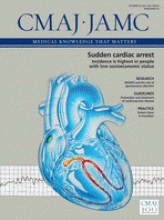On the surface, the title of this book says it all. Written by Ray Moynihan, an Australian investigative journalist, and Barbara Mintzes, a Canadian professor of pharmaceuticals and therapeutics, this book reveals the measures drug companies have used to engineer the potentially lucrative diagnosis female of sexual dysfunction (FSD).
The race to find a sexual enhancement drug for women was declared following the blockbuster success of Viagra. While a safe and effective option proves elusive, industry competitors have done their best to establish FSD as a widespread, primarily physiological problem afflicting as many as 43 per cent of women. The supposed origins of FSD seem to change depending on which drug is in the pipeline as the next blockbuster hopeful. So far, it has been explained by industry-sponsored doctors and marketers as a vascular, hormonal and/or neuroscientific phenomenon. But can women’s lack of sexual enjoyment really be chalked up to shortcomings within her own body? According to these critics and the others they interview, this may be the case for a minority of women, especially when iatrogenic factors are at play, but not typically.
However, this book is about much more than the politics of the controversial and much hyped possibility of a pink sildenafil. The authors use these developments as a springboard to examine the power and influence of the pharmaceutical industry in the contemporary medical landscape. They highlight the lengths that the industry will go to bring a potentially lucrative lifestyle drug to market. CMAJ readers will not be surprised that tactics include funding continuing medical education sessions, medical conferences and research studies on FSD, as well as using these venues to promote the off-label use of drugs to treat FSD. They also employ public relations firms, advertisers, marketers and established medical spokespeople to provide supposedly unbiased information about this diagnosis.

Image courtesy of Greystone Books
When and if a drug is ever approved to treat FSD, the authors outline the range of strategies its makers might use to ensure its success: courting doctors with gifts, holidays and banquets; providing physicians with diagnostic checklists with hopes of casting the net wide for patient eligibility; and reaching consumers directly through print, television and online advertising.
Despite all of these efforts, Moynihan and Mintzes are careful to emphasize that where there is the potential for powerful persuasion, there is also resistance. This book gives fair representation to the range and variety of ways in which health care practitioners, researchers and the lay public have reacted to the drug industry’s tactics. They highlight the viewpoints of clinicians and researchers who accept pharmaceutical research funding in the absence of other options, including those who publish research findings that are not industry friendly.
They also highlight the massive critique of big pharma that has developed inside and outside of medical circles. For example, ample space is given to discussing the New View Campaign, a movement headed by Leonore Tiefer, sex therapist turned medicalization critic. This international, interdisciplinary movement has exposed the lies behind science and media claims about female sexual dysfunction and the reasons why women may or may not enjoy sex.
On that note, Moynihan and Mintzes spend some time tackling the question of what makes the medicalization of women’s sexual problems particularly troubling. Even more could be made of this point. From a historical perspective, the pressure to be sexual and the sexualization of women in particular, is at an all time high. And yet women continue to face a range of psycho, social and political factors that may be detrimental to their sexual enjoyment. Will amping up genital blood flow, testosterone or serotonin levels solve problems such as lack of empowering sex education, experiences of sexism and sexual trauma, stress or the ongoing sexual double standard? Not likely.
Readers who are concerned about the growing power of the pharmaceutical industry in shaping clinical research, practice and lay self-perceptions will enjoy this book. For those who have been closely following the race to find a sexual pharmaceutical for women, many of the arguments will not be new. However, this book synthesizes an incredible amount of information and includes the perspectives of a wide range of key players. As investigative journalism engaging intelligently and precisely with publications from science, medicine, sociology and psychology, it is a refreshing read.











